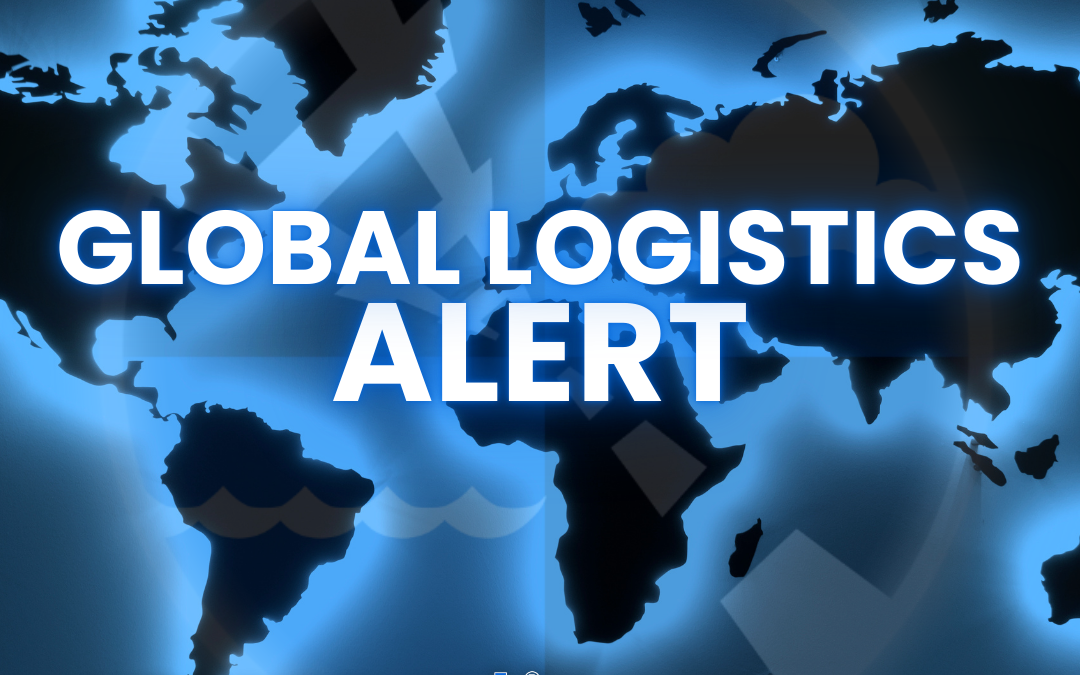
by Scott Frederick | Feb 25, 2025 | Global Logistics Alerts

Fees as high as $1.5 million per call proposed by United States Trade Representative
In a major retaliatory move against China, the United States is proposing expensive charges that could add millions of dollars in costs for ocean container lines and other carriers calling U.S. ports. The proposal by the office of the United States Trade Representative (USTR), published Friday in the Federal Register, sets fees as high as $1.5 million per U.S. port call for ships built in China and $500,000 for a vessel operator with even a single Chinese-built ship in its fleet, or on order with a China shipyard. About 17% of the container vessels calling U.S. ports are Chinese-made, according to analysts Linerlytica. That comes to 1.29 million of the total 28.2 million TEUs (twenty-foot equivalent units) imported by the U.S. in 2024.
Read more at:
https://www.freightwaves.com/news/us-targets-china-ships-operators-with-millions-of-dollars-in-new-port-charges


by Scott Frederick | Feb 25, 2025 | Global Logistics Alerts

Trump says Canada, Mexico tariffs on schedule despite border, fentanyl efforts
President Donald Trump said on Monday that tariffs on Canadian and Mexican imports are “on time and on schedule” despite efforts by the countries to beef up border security and halt the flow of fentanyl into the U.S. ahead of a March 4 deadline.
- Trump says Canada, Mexico tariffs moving ‘very rapidly’
- Canada, Mexico face 25% US tariffs as soon on March 4
- Canada will also see a 10% duty on energy products
- Mexican minister cites constructive dialogue with US on border, fentanyl
- Tariffs may be delayed but still threatened to ensure border measures working, legal expert say
Read more at:
https://www.reuters.com/world/americas/canada-mexico-step-up-fentanyl-border-talks-this-week-avoid-trumps-tariffs-2025-02-24/
https://www.yahoo.com/news/trump-says-administration-move-forward-133640171.html


by Scott Frederick | Feb 21, 2025 | News
Senior Vice President, Global Government Solutions Derek Berlin was featured this week on an episode of The Briefing with Steve Scully on SiriusXM. In this episode, Derek shares insights from his travels across Ukraine over the past year, reflecting on his experiences and offering an optimistic perspective on the country’s future. The conversation is a natural follow-up to the Steve Scully interview with Logistics Plus COO Yuriy Ostapyak a few weeks ago.
You can listen to a replay of Derek’s segment on SiriusXM on the LP Radio channel link embedded below.
Also pictured below (L-R) are Steve Scully, Jim Berlin (CEO), Yuriy Ostapyak (COO), and Derek Berlin (SVP of Global Government Solutions) at the SiriusXM studio in Washington, DC. We appreciate the coverage and support from Stevey Scully, a fellow Erie, PA native.

About ‘The Briefing with Steve Scully’
“The Briefing with Steve Scully” airs on POTUS Politics — satellite channel 124 and streaming on the SiriusXM app — weekdays from 12–2 pm ET. On his show, Scully — Senior Vice President at Washington, D.C.’s Bipartisan Policy Center — takes listeners inside the stories and conversations that are shaping the day in the nation’s capital. Visit https://www.siriusxm.com/blog/the-briefing-with-steve-scully to learn more.

by Scott Frederick | Feb 19, 2025 | Global Logistics Alerts

Trump says he will introduce 25% tariffs on autos, pharmaceuticals and chips
U.S. President Donald Trump said on Tuesday he intends to impose auto tariffs “in the neighborhood of 25%” and similar duties on semiconductors and pharmaceutical imports, the latest in a series of measures threatening to upend international trade. On Friday, Trump said levies on automobiles would come as soon as April 2, the day after members of his cabinet are due to deliver reports to him outlining options for a range of import duties as he seeks to reshape global trade.
Highlights:
- Trump says he will reveal more about 25% autos duty on April 2
- Pharma, chip firms may face tariffs above 25%, timing uncertain
- EU trade chief to meet with US officials on Wednesday
- Auto industry faced tariff probe in 2018, Trump passed on duties
Read more at:
https://www.reuters.com/business/autos-transportation/trump-auto-tariff-rate-will-be-around-25-2025-02-18/


by Scott Frederick | Feb 12, 2025 | Global Logistics Alerts

White House Announces Reinstatement of Steel Tariffs and Increase Aluminum Tariffs
The White House announced proclamations on steel and aluminum, reinstating tariffs under the authority of Section 232 of the Trade Expansion Act of 1962. Effective March 12, 2025, the steel and aluminum tariff rates will be 25 percent. The proclamations address key reforms, including eliminating all alternative agreements, applying strict “melted and poured” standards, expanding tariffs to include key downstream products, terminating all generally approved exclusions, and enforcing tariff misclassification and duty evasion.
Steel
- 25 percent tariff will apply to steel and steel derivative products.
- Exemptions are no longer available for Argentina, Australia, Brazil, Canada, Japan, Mexico, South Korea, the European Union, Ukraine, and the United Kingdom.
- Any exclusions will not apply.
Aluminum
- Tariff rate will increase from 10 percent to 25 percent for aluminum and aluminum derivative products.
- Reportedly, for any derivative aluminum article that is not in Chapter 76, the additional 25 percent tariff will apply only to the aluminum content of the derivative article.
- Tariffs on aluminum derivative products will be effective once the Commerce Department reports that adequate systems are in place to fully, efficiently, and expediently process and collect tariff revenue for covered articles.
- Granted product exclusions will remain in effect until their expiration date or until the excluded product volume is imported, whichever comes first.
The “Adjusting Imports of Aluminum into The United States” announcement is pending official publication at www.whitehouse.gov. The annex for steel and aluminum tariffs with additional details is expected to be published.
Read more at:
https://www.whitehouse.gov/presidential-actions/2025/02/adjusting-imports-of-steel-into-the-united-states/






